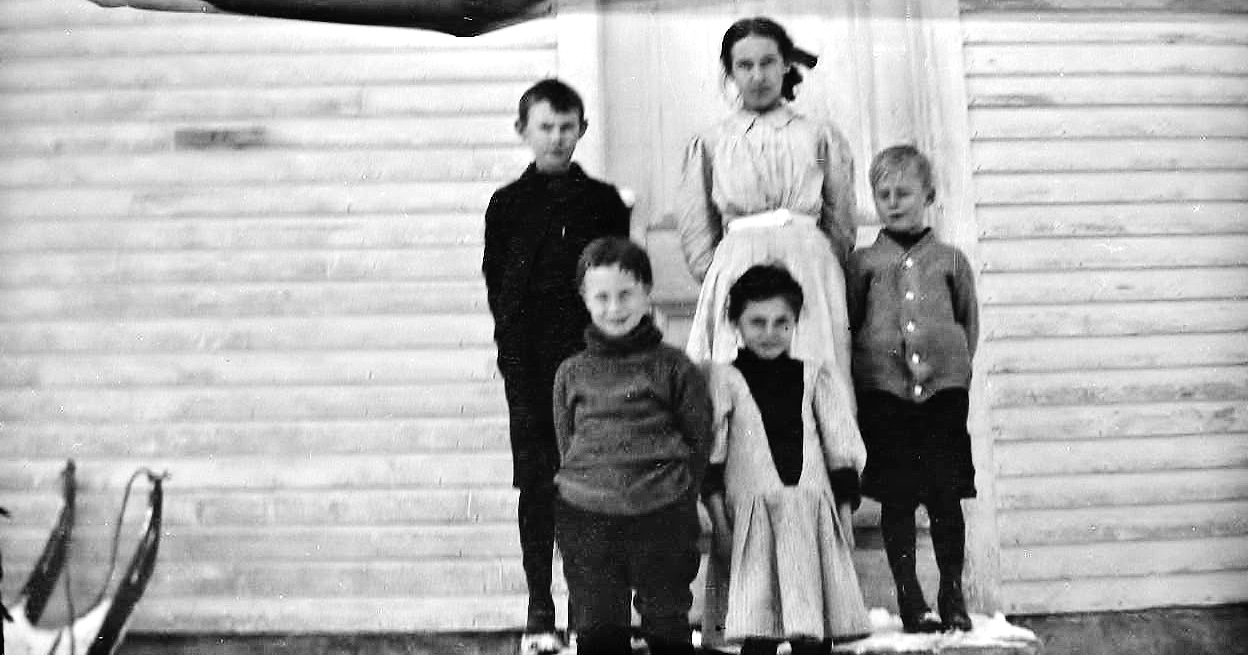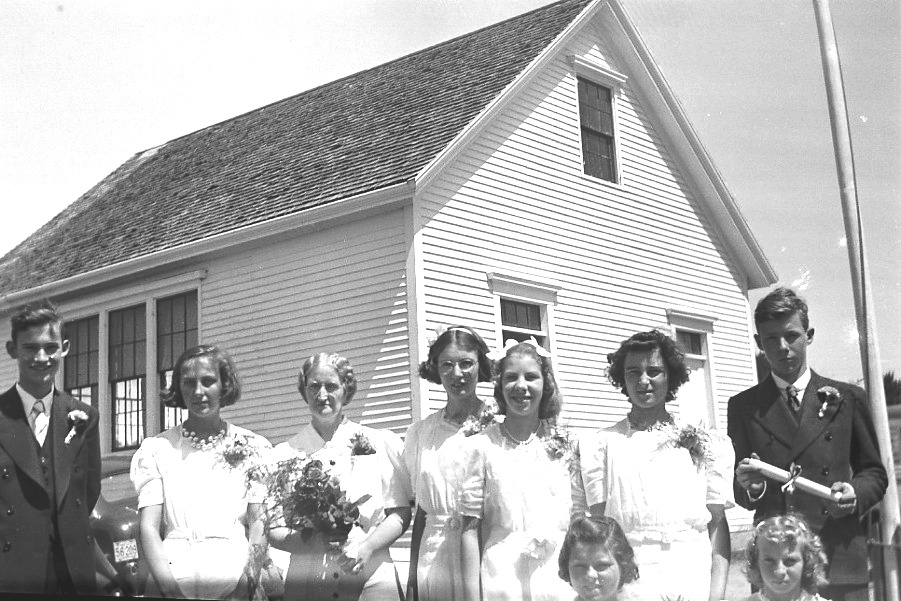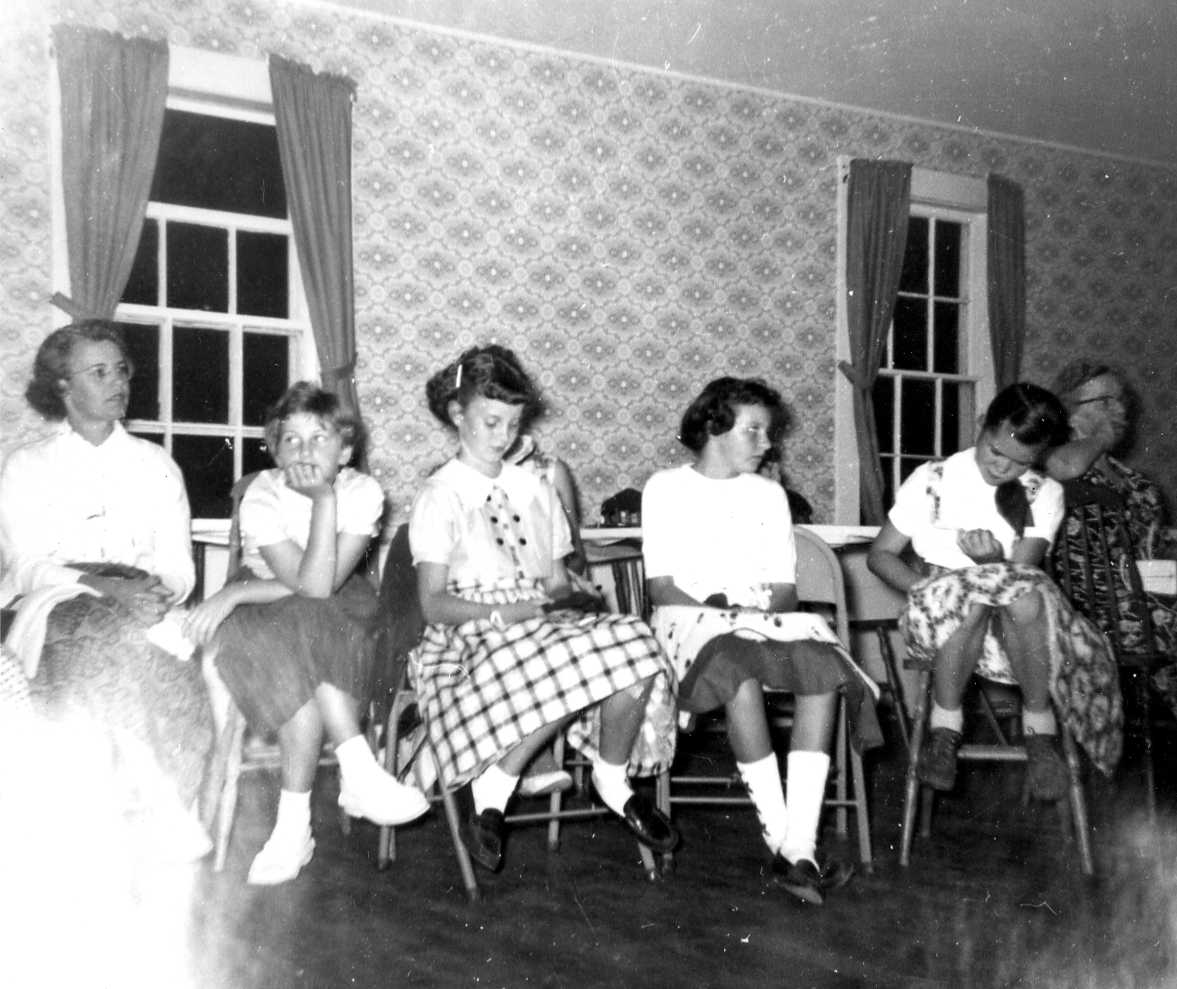By local historian Kathy Smith and the Wolfe Neck Club History Committee
As Wolfe’s Neck Center provides learning experiences for local children with creative new approaches this fall, a little white building surrounded by our farm fields stands to remind us of a very different kind of education in the past.
The building, identified as the Wolfe Neck Club over its double front doors, stands on Wolf Neck Road just west of Burnett Road. (Community members know spellings vary; club members disagree on whether the “e” should be on the name on the door). Built in 1856, five years before the onset of the Civil War, it was a one-room schoolhouse where children grades one through eight gathered to learn from one teacher, usually an unmarried woman from the neighborhood who most likely was educated there herself. There were three terms–fall, winter, and spring–and male teachers were sometimes brought on in winter to handle the boys who could be unruly, more likely to attend in the winter.

The two doors were there to provide separate entrances for boys and girls, to prevent any kind of untoward jostling between them. Once clothing had been hung on personal pegs in the cloakroom, students in the nineteen century entered a room with a central wood burning stove and locally crafted pine desks and chairs not necessarily of the right size for the children assembled. The youngest students learned reading, spelling, writing, and arithmetic, with geography and grammar added for the older scholars. Literature might be learned at home. The older students in the higher grades moved to desks in the back. In the early days, students brought their own books, often hand-me-downs. The quality of the teaching must have varied; the annual school report for 1883 reported that Effie Brewer had taught the spring and fall terms and that this was “her first and certainly a worthy attempt.” An uncomfortable thought is raised by the report in 1898 that a “new and well arranged out-building had been erected so that sanitary conditions are well cared for . . . in our opinion a step in the right direction for the moral well-being of our children.” What came before is undescribed.

Nearby were other schools on Litchfield Road known as the Upper School, and one on Flying Point Road so all students could attend one in walking distance; the former building is gone, the latter is now the Thomas Means Club. The Wolf Neck School was the smallest in Freeport, sometimes with as few as 5 or as many as 19 students. Sometimes terms or a whole year were cancelled for lack of enough students. The school closed entirely in 1920 and the few youngsters on the neck went to the Litchfield School where the stern and demanding Miss Edna Byrum taught for 50 years. A former student reminisced in his 90s that they really learned things, perhaps more than students studying in town. Miss Byrum’s students were often top of the class at Freeport High School.

In 1928 the Farm Bureau convinced the town to let it use the empty school for a clubhouse. In 1941 many of those same members formed the Wolf Neck Club and purchased the building from the town where it held suppers, community socials and fairs, and provided volunteers to meet the needs of neighbors. The club and many of its traditions continue today in a building remarkably unchanged since its construction, except for a 1955 addition with kitchen at the rear. It welcomes new members in the Zoom mode of the day.
This narrative is part of an ongoing Wolf Neck Club History project
← Back to Blog